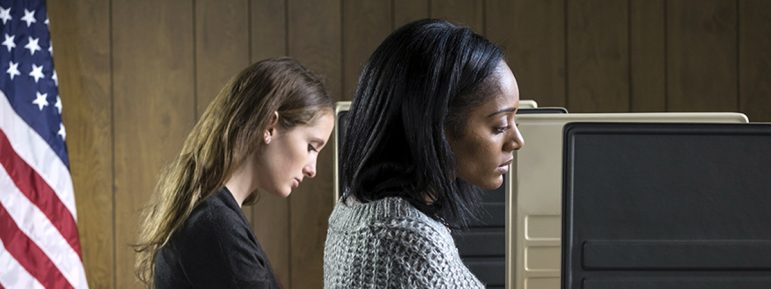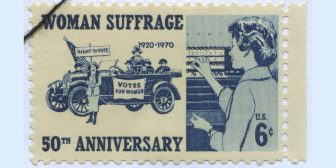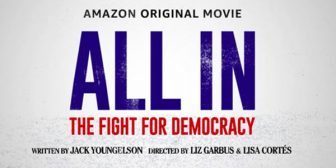By Julie Holderbaum, Minerva EA/OEA

On a recent visit home, my 22-year old stepdaughter told me that she wasn’t planning to vote this year, and then she admitted that she never had before, either.
As we talked, two reasons for this came to light. Apathy was not one of them. Instead, not knowing what to expect at the polls, not knowing which local candidates would be on the ballot, and feeling that her vote wouldn’t matter anyway were enough to silence her voice.
She expressed that she was really nervous to go to the polling place because she had no idea what to expect. I have always emphasized the importance of registering to vote to my students. I’ve even helped register several voters in my classes of juniors. But in my haste to register my students to vote, it never occurred to me to explain to them what the actual act of voting would be like.
She wasn’t too worried about not going to vote since the 2016 election convinced my stepdaughter that her vote wouldn’t matter anyway. I can see why she felt that way; Hillary Clinton won the popular vote by 3 million votes but lost the election because she came up short in the electoral college. The fact is, however, that history is replete with elections decided by one or a very few votes. In Vermont in 2016, both a state Senate Democratic primary and a state House seat were determined by one vote[1], and several presidential elections have been narrowly decided as well[2].
My stepdaughter’s revelation to me was heartbreaking. I hated the thought of her not exercising the right that so many people fought so hard to get, the right that gives her a voice in choosing the values and policies of the community and country she lives in.
Many educators discuss the importance of voting with our students. But can we do more to alleviate their anxiety and fear of the unknown, to make them feel that their voice matters? I think we can.
- Share your first time voting story. You don’t have to disclose who you voted for to tell students about where you were and how you felt. Did you vote in person or absentee? Did you feel prepared to vote? What did it feel like if you didn’t know anything about candidates on the ballot? I tell them how I’ve felt when I’ve seen names on a ballot in local races and not known anything about them: do I pick one at random or do I not vote in that race? One seems risky and the other seems disrespectful to all those who have fought for my right to vote. I also tell them that it feels so much better to know I have done the research and am voting for a person (or issue) with intention.
- Explain the voting process. Encourage them to let the poll workers know it is their first time voting; most likely, they will be excited and happy to help them navigate each step of the process. Tell them that they will show their ID and it will be scanned, and they will sign either a paper or an electronic keypad. They will be directed to the voting booth, which may or may not have a curtain like the voting scenes on TV always seem to. They may vote on a computer. They might be given a paper ballot and a pen to bubble in their choice. They may be given a punch card to indicate their choices. Tell them that they do not have to vote in every race on the ballot. Whatever the method, reassure them that it will be private and no one will see how they vote. Discuss the importance of completing absentee ballots thoroughly and correctly, and following all directions precisely.
 Discuss the history of the fight for suffrage in America. Only 6% of Americans were eligible to vote in the first presidential election.[3] The other 94% had to fight to get the right to participate in democracy in America. Read articles and show movies about efforts to get the right to vote and the obstacles that still impede efforts to vote for so many Americans. The 2020 Amazon Prime documentary All In: The Fight for Democracy is excellent and gives a history of voting rights and suppression efforts in America. (Preview any film before showing your classes).
Discuss the history of the fight for suffrage in America. Only 6% of Americans were eligible to vote in the first presidential election.[3] The other 94% had to fight to get the right to participate in democracy in America. Read articles and show movies about efforts to get the right to vote and the obstacles that still impede efforts to vote for so many Americans. The 2020 Amazon Prime documentary All In: The Fight for Democracy is excellent and gives a history of voting rights and suppression efforts in America. (Preview any film before showing your classes).- Impress upon your students that every vote counts. Read about elections that came down to just a few votes. Share the fact that studies show more people vote when they know lots of other people are voting. Tell your students that publicizing they are voting can remind and encourage others to vote…and all of those votes will certainly have an impact.[4]
- Demonstrate how to find information about the candidates, registration, and polling places. Today’s young voters have advantages that I did not when I first voted. Websites for each state’s Secretary of State and County Boards of Elections have information about how to check if your voter registration is up to date and more. The Ohio Voter Info app [5] allows users to see a sample ballot, making it easy to research the candidates and issues before going to the poll. The app also allows users to check absentee ballot status, see where their polling place is, and view election results. When We All Vote is another great resource, and the website has a toolkit for schools to teach kids of all ages about voting.[6]
- Build excitement for future voting in children. What if we could get kids to look forward to their first time voting as much as they look forward to getting a driver’s license or going to prom? If we start talking about voting with young children, I think we can build a level of excitement and appreciation for the right to vote. There are books for all ages of children that address elections and voting.[7] Make them part of your classroom library.
Along the same lines, take your own children with you when you vote. I have taken my daughter with me since she was four years old, and every time, I have explained to her who I am voting for and why. The familiarity with the voting process has become ingrained in her. Encourage your students to ask their parents if they can go with them the next time they vote so they can see the process of voting in action.

Political conversations in the classroom that promote issues or candidates are never appropriate, but the act of voting is not a partisan issue. It is our duty as educators to prepare our students to become informed citizens who participate in the democratic process. We must remember, however, that it doesn’t matter how many students we register to vote; the only ones who have a voice are the ones who actually exercise that right. We need to go beyond registration efforts and address the concerns and fears young voters have about the actual act of voting.
During that infamous visit, my stepdaughter and I updated her voter registration and downloaded the Ohio Voter Info app. She knows where she is going to vote and which issues and candidates will be on her ballot. She’s ready to vote in one of the most historic elections in American history this November.
The best part? The next time she came home to visit, she had another announcement to make: “You’re going to be so proud of me. I helped my roommate register to vote.”
— Julie Holderbaum is an English Instructor and an Academic Challenge Advisor at Minerva High School, Minerva, Ohio.
[1]Close Elections: Why Every Vote Matters : NPR.” 3 Nov. 2018, https://www.npr.org/2018/11/03/663709392/why-every-vote-matters-the-elections-decided-by-a-single-vote-or-a-little-more. Accessed 5 Oct. 2020.
[2]“5 Close US Presidential Elections That Prove Every Vote Matters.” https://www.globalcitizen.org/fr/content/why-every-vote-matters-closest-elections-in-histor/. Accessed 6 Oct. 2020.
[3] “Watch All In: The Fight for Democracy | Prime Video.” https://www.amazon.com/All-Fight-Democracy-Stacey-Abrams/dp/B08FRQQKD5. Accessed 6 Oct. 2020.
[4] “A better argument for why every vote matters – The Princetonian.” 11 Oct. 2018, https://www.dailyprincetonian.com/article/2018/10/a-better-argument-for-why-every-vote-matters. Accessed 5 Oct. 2020.
[5] “Ohio Voter Information – Apps on Google Play.” https://play.google.com/store/apps/details?id=com.triadgsi.dev.ohiovotes&hl=en. Accessed 6 Oct. 2020.
[6] “When We All Vote.” https://www.whenweallvote.org/. Accessed 6 Oct. 2020.
[7] “Kids’ Books About Elections and Voting | Scholastic | Parents.” https://www.scholastic.com/parents/books-and-reading/book-lists-and-recommendations/history-social-studies/election-books.html. Accessed 5 Oct. 2020.
